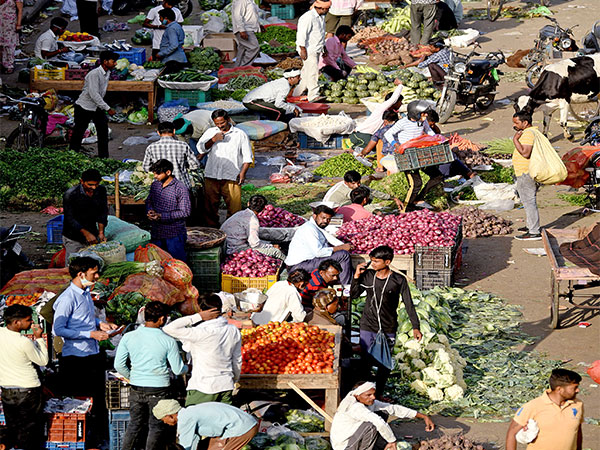Vegetable prices to remain high until June due to above-normal temperature
According to a report by CRISIL, this trend, driven by erratic weather patterns and climate change, highlights the vulnerability of vegetable prices to environmental factors.

- Country:
- India
Vegetable prices are expected to remain high till June due to above-normal temperatures, posing challenges for consumers across India. According to a report by CRISIL, this trend, driven by erratic weather patterns and climate change, highlights the vulnerability of vegetable prices to environmental factors.
The report also highlights that despite attempts by stakeholders to address the issue through various measures like creating buffer stocks and importing vegetables, the perishable nature of vegetables limits the effectiveness of such solutions. Additionally, India does not have adequate infrastructure such as cold storage facilities which further complicates the efforts to stabilize prices. The report further states India as one of the most climatically vulnerable countries, faces increasing risks to vegetable production and prices due to extreme weather conditions such as heat waves, flooding, and storms. Rising temperatures further exacerbate pest problems, adding to the challenges faced by farmers and consumers alike.
During the fiscal 2024, India witnessed significant fluctuations in vegetable inflation, with prices soaring to high levels. While tomatoes and onions often grab headlines, other vegetables like garlic, ginger, brinjal, parwal, and beans also experienced sharp price increases. "Vegetable prices typically follow a seasonal pattern -- surging in summers and withering in winters when fresh stocks arrive in the market. This phenomenon did not play out in the winter of fiscal 2024" states the report.
It further added "Vegetables were responsible for about 30% of food inflation in fiscal 2024, much higher than their 15.5% share in the food index". The impact of turbulent weather conditions, including El Nino-induced warmth and below-normal southwest monsoon, was evident in the disrupted supply chain and diminished crop yields. Rising temperatures exacerbate pest problems, further affecting vegetable production and prices.
The Indian Meteorological Department (IMD) has forecast an above-normal southwest monsoon this year but the distribution of rainfall remains a crucial factor. With above-normal temperatures expected until June, vegetable prices are likely to remain high in the coming months. As India grapples with the challenges posed by climate change and extreme weather events, stakeholders must prioritize resilience-building measures in the agricultural sector. Addressing infrastructure gaps and implementing sustainable farming practices are essential to mitigate the impact of climate variability on vegetable production and prices. (ANI)
(This story has not been edited by Devdiscourse staff and is auto-generated from a syndicated feed.)
- READ MORE ON:
- India
- El Nino
- The Indian Meteorological Department
- CRISIL
ALSO READ
Balraj Panwar secures India's first quota in rowing for Paris Olympics
Indian Biogas Association joins hands with HAI to promote hydrogen
Voting begins for Maldives Parliament, watched by India and China vying for control of Indian Ocean
CNH Industrial looks to leverage India's tech skills, cost advantages for global requirements
Indian-origin mayoral candidate wants to run London like a 'seasoned CEO'










